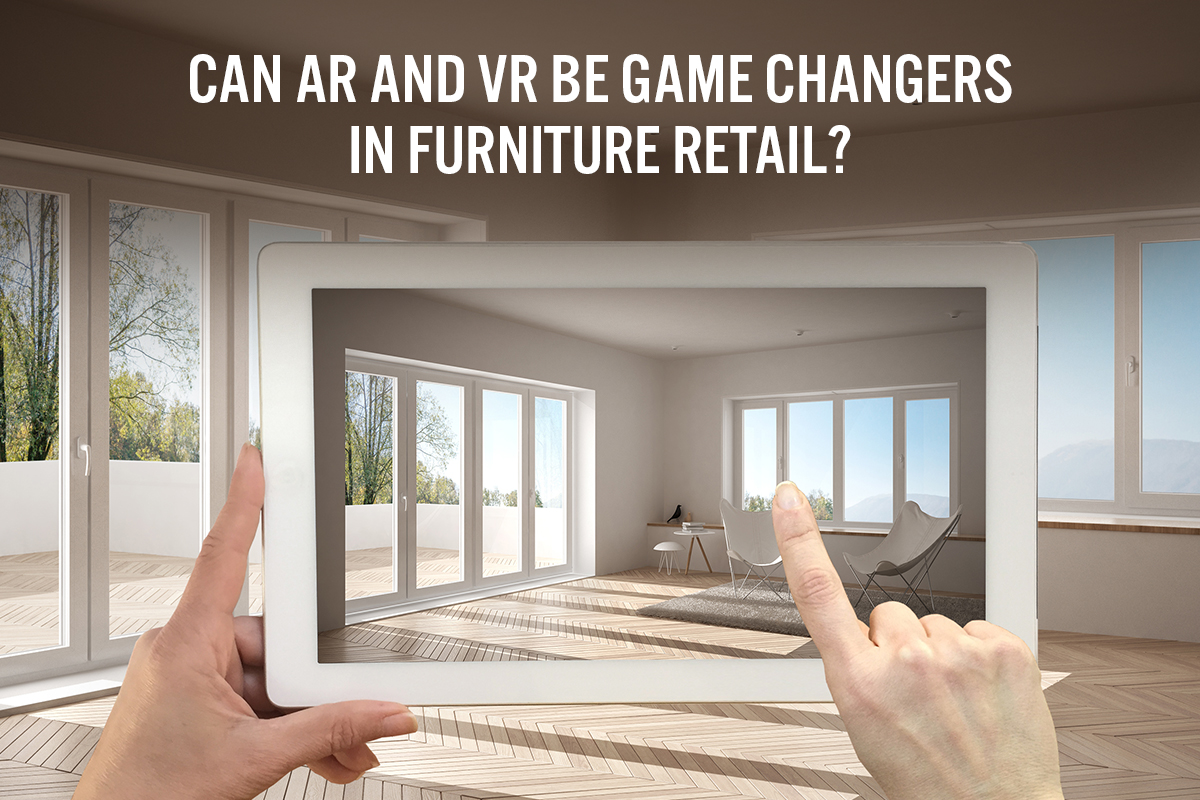
Nitheesh NH
Introduction
The massive global success of AR-based game Pokémon Go, which was launched in 2016, served as a significant reminder to global retail about the immense potential of AR. VR, another technology that has roots in the gaming industry, also has significant applicability and potential in retail. AR and VR, also known together as reality technology or immersive technology, are slowly but surely transforming the shopping experience for consumers in both online and offline retail. The furniture retailing sector in particular is seeing more retailers adopt these technologies in order to meet consumer demand and expectations and address pain points in the shopping journey. With furniture typically being a costly and infrequent purchase, customers tend to gather as much information before buying in order to make a considered decision. This includes getting a sense of how a particular product would fit in their homes and whether it would match the décor of the rest of a room. This is where AR and VR can have a significant impact. From the retailer’s perspective, facilitating customers in getting a true picture of what they are purchasing can go a long way in driving down returns rates. The advent of AR and VR has helped to achieve this and so it is no surprise that retailers are investing in technologies to this end. In this report, we discuss how various brick-and-mortar and digital retailers in the furniture sector are leveraging reality technologies to offer enhanced shopping experiences to their customers and boost both top- and bottom-line growth.Store-Based Retailers Are Investing in AR and VR To Enhance the In-Store Experience
A number of retailers have made significant investments in AR and VR capabilities. IKEA is among the pioneers in adopting reality technology, having first launched an AR app in 2013 alongside its printed catalog. More recently, IKEA launched an AR-powered application called IKEA Place in 2017, which enables users to experience its products through Apple iOS 11’s ARKit technology. It was initially an iPhone-only app, but the retailer subsequently introduced it for Android users in March 2018. Using the app, customers can gauge how various IKEA products would fit within their homes by virtually placing 3D renderings into a space—shoppers can use the app to scan their rooms, browse and select items and reposition the image to ascertain where it would fit best. The technology allows users to visualize the texture of the fabric, as well as the effect of light and shadows on the product. Moreover, users can also use the app to share images on social media. In September 2019, IKEA updated its IKEA Place app with new features that combine AR with artificial intelligence (AI) and allow users to receive curated and personalized home-furnishing tips and recommendations. [caption id="attachment_102228" align="aligncenter" width="700"]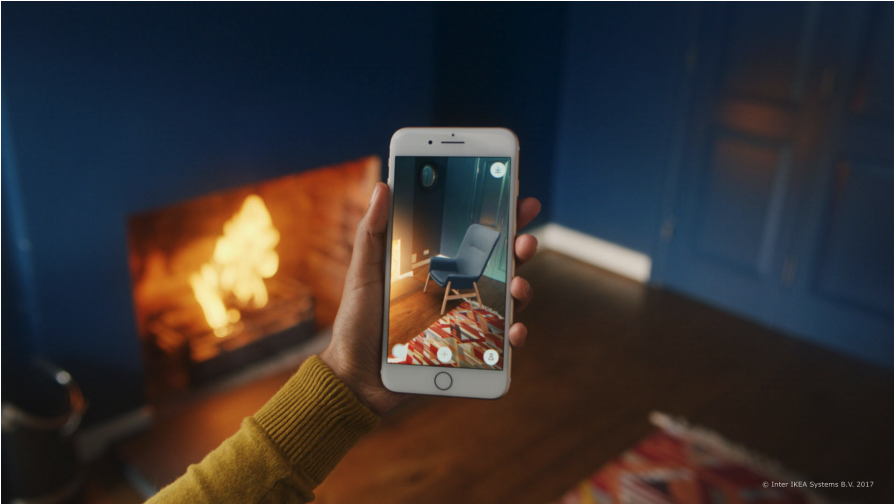 IKEA Place app
IKEA Place appSource: Ikea.com[/caption] In addition to its AR app, IKEA integrates VR technology into the shopping journey through its in-store Virtual Home Experience. Developed in partnership with digital agency Demodern as an interactive showroom, it allows customers to explore and configure IKEA products in a virtual space in real time. Operated through a VR headset, the technology has a clean and simple user interface. More recently, Ikea announced in May 2019 that it is testing a new shoppable VR app which the retailer will first launch in France and the Netherlands before subsequently introducing it in other top markets. Macy’s collaborated with AR and VR specialist Marxent from October 2018 to introduce more than 70 VR installations across the US. Operated through VR headsets, the technology helps consumers to visualize furniture selections before buying, so they are able to make more-informed purchasing decisions. Macy’s VR-influenced furniture sales across three pilot stores grew more than 60% compared to their non-VR counterparts and cut returns to less than 2%, according to an October 2018 company press release. The retailer went on to open its 100th VR furniture gallery in February 2019. According to company management in February 2019, returns rates for customers who use the VR offering are 25% lower and basket sizes are 44% higher than for customers who do not use the technology. Macy’s also offers an AR-based feature called “See Your Space IRL,” which enables users to virtually place the retailer’s furniture offerings in their living environment. The feature was initially available only on iOS on iPhone 7 and newer models, but it is now available on Android devices as well. [caption id="attachment_102229" align="aligncenter" width="700"]
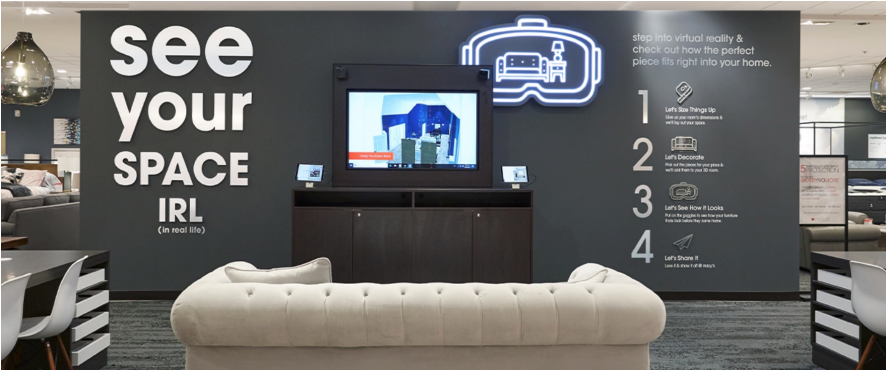 Macy’s See Your Space IRL
Macy’s See Your Space IRLSource: Macys.com[/caption] Home-improvement retailer Lowe’s added an AR-powered feature called View in Your Space to its app in March 2018, in partnership with Canadian tech-company Finger Food Studios. This functionality showcases how a product will look in the shopper’s home—users first scan their environment through the app using their smartphone camera and then place virtual items from Lowe’s catalog of home-improvement products into this setting. The View in Your Space feature was introduced to address a key pain point identified by the retailer: According to Lowe’s research, an estimated $70 billion in missed revenues are missed on a yearly basis in home-improvement projects as a result of consumers experiencing visualization challenges and a lack of design assistance. However, a limitation of the in-app functionality is it can only be used via mobile devices with ARCore (a software development kit developed by Google that supports AR applications). [caption id="attachment_102230" align="aligncenter" width="700"]
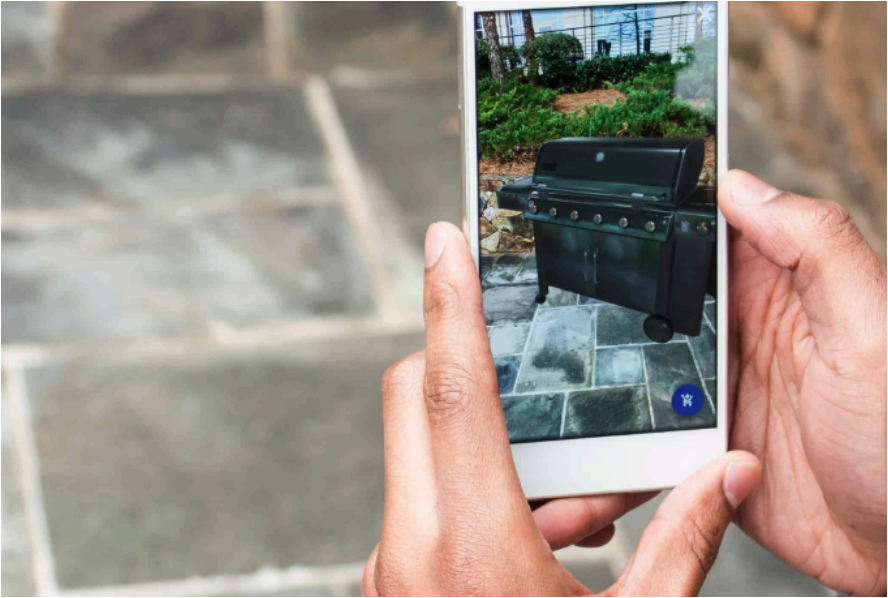 Lowe’s View in Your Space in-app feature, depicting how a barbeque would look in a back yard
Lowe’s View in Your Space in-app feature, depicting how a barbeque would look in a back yardSource: Lowes.com[/caption]
Digital-First Retailers Are Leveraging AR and VR to Improve Online Shopping Experience
As digital-first retailers bid for a greater share of the furniture market, one of the significant challenges they face is the absence of the “touch and feel” aspect in online shopping, which is traditionally a significant factor among furniture buyers. The introduction of AR and VR is helping to address this, by enabling customers to get a better understanding of what they are buying through various virtual tools: The “try before you buy” experience gives potential customers more confidence in the product and so helps convert browsers to buyers. Wayfair began investing in AR in 2016. Its mobile app has an AR-powered feature called “View in Room,” which runs on Apple’s ARKit AR platform. Shoppers can point their smartphone camera toward a particular space in their home and then virtually place a selected product from the company’s online catalog. The furniture item can then be moved around and viewed from different angles, giving users a sense of what it would look like in their home. Wayfair expanded the app to android devices in 2018. Through its partnership with wearable-technology startup Magic Leap, Wayfair launched another AR-based interior-design app called Wayfair Spaces in October 2018. Using the concept of spatial computing, the app offers shoppers an immersive experience into the room-design process by blending AR with VR. Through a Magic Leap VR headset, users can see a range of 3D digital rooms curated by Wayfair stylists, and can furnish and decorate a computer-generated home environment with Wayfair furnishings. However, the high-tech glasses that are needed to use the app are expensive, and as a result, its use case is mostly limited to interior decorators and professionals—the app does not seem to resonate with the average consumer. [caption id="attachment_102231" align="aligncenter" width="700"] Wayfair Spaces: Innovation in Mixed Reality
Wayfair Spaces: Innovation in Mixed RealitySource: Wayfair tech blog[/caption] Amazon’s app offers a feature called “AR View,” which enables users to visualize various products—including furniture—in their own home through a smartphone camera. After initially launching the feature for iPhones, the company subsequently expanded it to include ARCore-enabled Android phones. In 2019, Amazon introduced a VR shopping experience called Showroom on its website and app. The feature allows users to place furniture and home furnishings into a customizable virtual living room. Williams-Sonoma’s AR app includes 3D room design and product-visualization tools for its subsidiary brand Pottery Barn. When it was launched in March 2017, this feature was initially only available on Android mobile devices that supported Google’s Tango AR technology, but Williams-Sonoma released an iOS version of the 3D Room View app in November that year. [caption id="attachment_102232" align="aligncenter" width="700"]
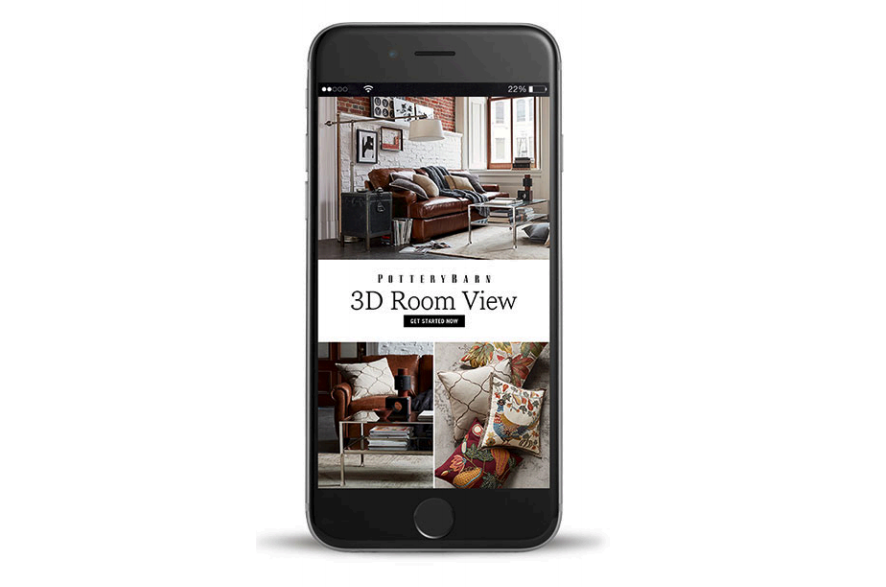 Pottery Barn’s 3D Room View app
Pottery Barn’s 3D Room View appSource: Potterybarn.com[/caption] Other digital-first furniture retailers such as Overstock have also introduced AR-based shopping apps, and the technology is slowly establishing itself as a norm in the industry.